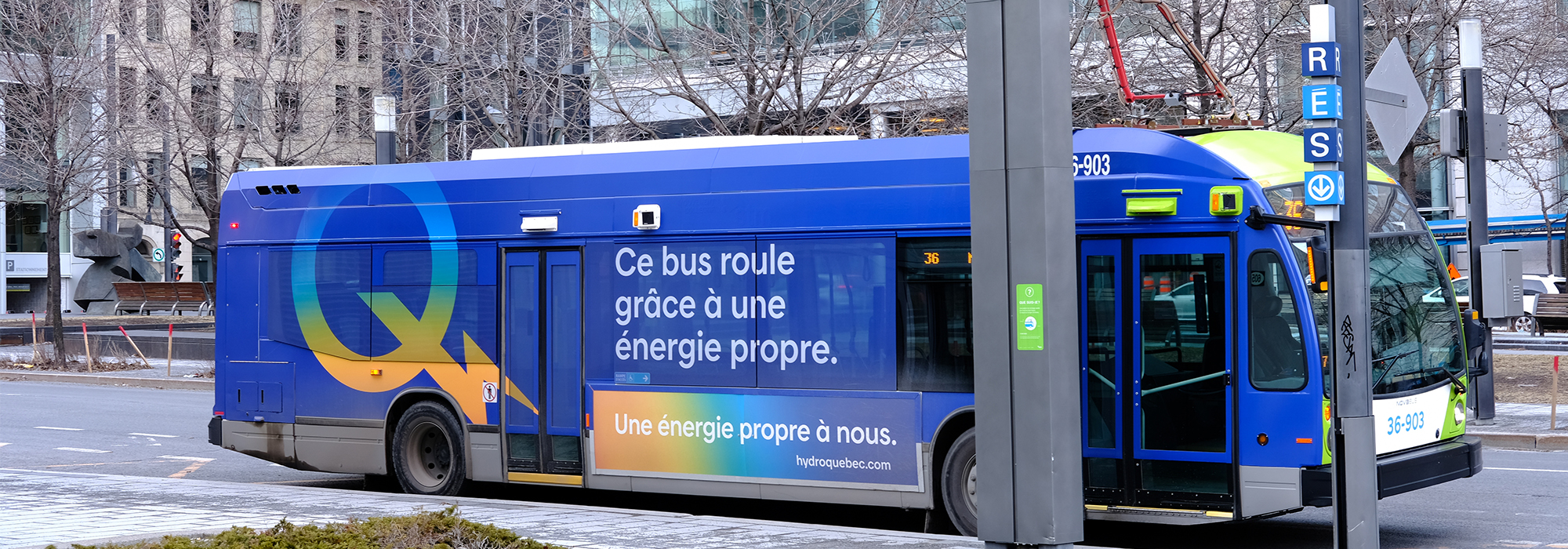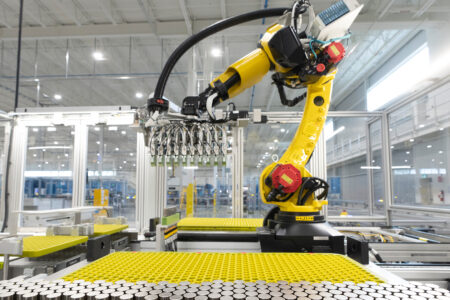
We all have to get around. We take the car or the bus to work, we drop our kids off at school, we stop by the supermarket regularly. All that moving around takes up a large portion of our lives. It also makes up a significant portion of our emissions in Canada. Transportation represents 28 percent of the carbon pollution we produce in this country, and much of that comes from cars, trucks – and buses.
Yet the push for electric buses has not kept up with the push for electric cars.
An easy-to-access federal program gives a $5,000 rebate to drivers who buy an electric car. But this kind of help is not offered to transit agencies that want to acquire electric buses.
It’s true that transit is in itself a climate solution, as buses and trains help get people out of individual cars. (A Montreal study found transit is roughly 20 times cleaner than cars.) But the vast majority of transit vehicles still pollute. Electric buses, on the other hand, cut pollution by eliminating tailpipe exhaust entirely, and they’re healthier for the many riders who board them every day.
But in most of its cities Canada is falling behind in adopting zero-emission buses. Clean Energy Canada outlined the situation in its spring report, Will Canada Miss the Bus? This is ironic, considering Canada is home to several leading electric bus manufacturers, such as Winnipeg’s New Flyer and Quebec’s Nova Bus.
The good news? There is a clear road forward for Canada in electrifying transit.
Additional investment is key, but there is another secret to success: keep it simple, as illustrated in a new paper by Robert Parsons, a University of Manitoba sustainability economics instructor, who is also one of the co-authors. The funding needs to be predictable and easily accessible, and it needs to have a streamlined application process.
Things are turning around. Governments at all levels now understand the opportunity electric buses offer. The federal government, British Columbia and the City of Vancouver all made the Drive to Zero Pledge this spring, an initiative of US-based Calstart, facilitated by Clean Energy Canada. This pledge commits its signatories to actively accelerating the adoption of zero-emission commercial vehicles, with the goal of these vehicles dominating the market by 2040. And the federal government has recently put its money where its mouth is, investing in new electric buses in Brampton, Ontario, this summer.
But such funding often comes through a variety of programs that support multiple projects. It can entail lengthy applications and approvals before even a single bus can be purchased. The process may be appropriate for large infrastructure projects, but it can be a major deterrent for a small, resource-strapped municipality that wants to cut its carbon footprint.
The solution? A federal rebate for zero-emission buses modelled after the program for electric cars, sales of which have surged since its implementation. This would help level the playing field for small municipalities — for the cities and towns whose transit managers might not have time to manage a lengthy funding application process, on top of making sure their current fleet runs smoothly. It would also allow the Public Transit Infrastructure Fund, which is currently the main source of bus funding, to focus its spending on other essential elements such as charging installations, and the integration work that is needed for widespread zero-emission bus adoption.
We know that zero-emission buses have significantly lower operating costs, thanks to savings in fuel and maintenance. But for now, their higher purchase price means diesel buses are, in many cases, marginally cheaper on a total-cost-of-ownership basis. That’s why, for a rebate program to tip the total cost of ownership in favour of zero-emission buses, it needs to be a long-term commitment. It’s true that the widespread adoption of zero-emission buses will also require funding for integration planning, charging infrastructure and other facility upgrades, but that’s where programs like the Public Transit Infrastructure Fund come into play.
The rebate fund should be a targeted $100-million pool to be given out gradually over six years, starting at $250,000 per bus and ramping down to $50,000 per bus by the end of the program, notes Parsons in his paper. This tapering rebate would incentivize early adopters across Canada. It would also be in pace with the predicted drops in the cost of electric buses, which are expected to hit sticker-price parity with diesel buses around 2030. (They will likely be cheaper well before then, when one factors in the operational costs.)
Canada has already benefited from cities like Toronto, Montreal and Vancouver committing to entirely zero-emission bus fleets. Contracts to build electric buses are going to Canadian-owned manufacturers. Meanwhile, China’s largest electric-bus company, BYD, just opened an electric-bus assembly plant in Newmarket, Ontario. While it has created jobs for Canadians, it is a reminder that we need to support our homegrown companies if we want them to succeed.
Electric buses represent a solution in more ways than one: They’re clean, they’re more efficient than passenger cars, and many are built by Canadians working at Canadian companies.
Now we just need to make this solution simpler and fairer for every Canadian community that wants to hop on board.
Photo: Shutterstock by c.I.I.o
Do you have something to say about the article you just read? Be part of the Policy Options discussion, and send in your own submission. Here is a link on how to do it. | Souhaitez-vous réagir à cet article ? Joignez-vous aux débats d’Options politiques et soumettez-nous votre texte en suivant ces directives.











